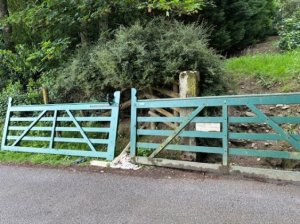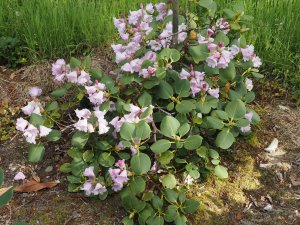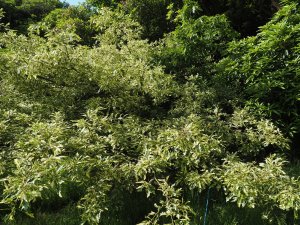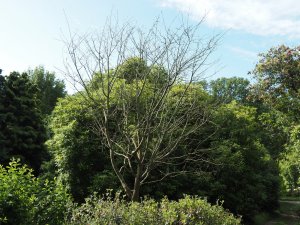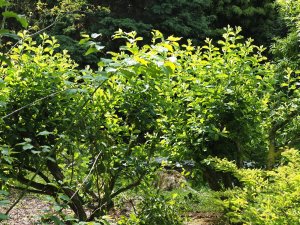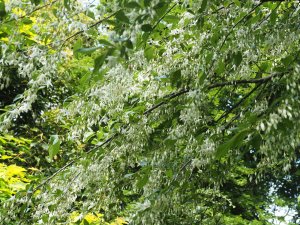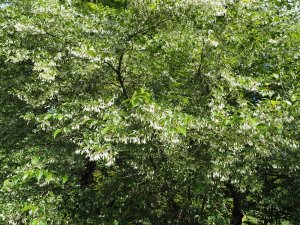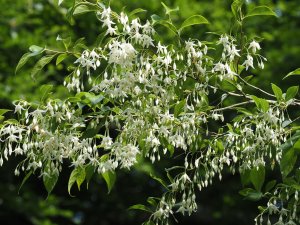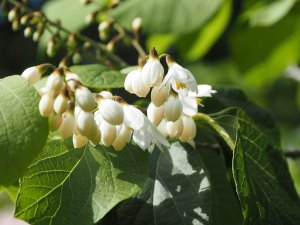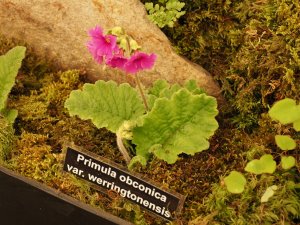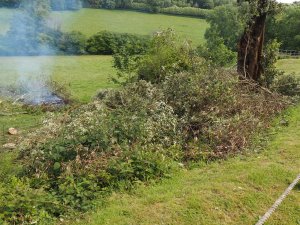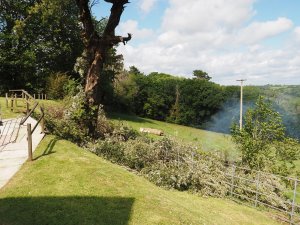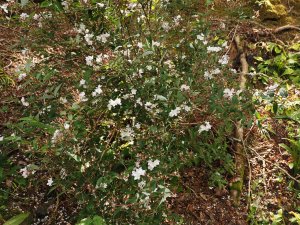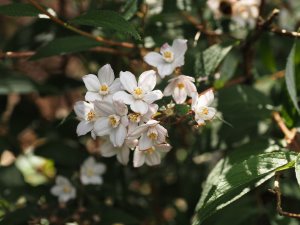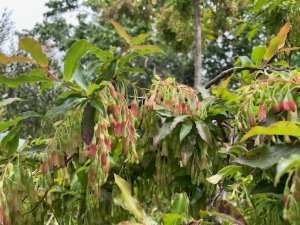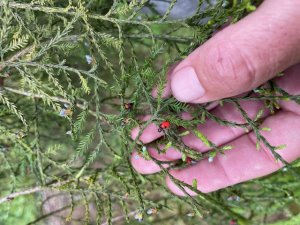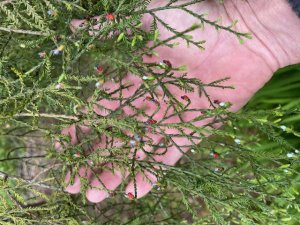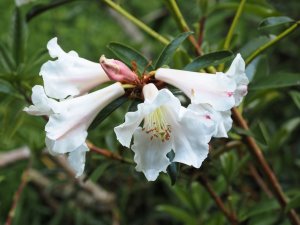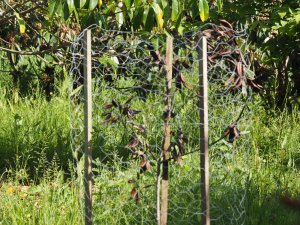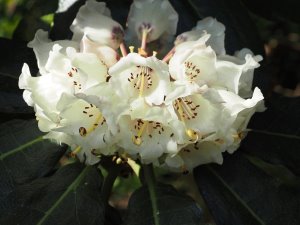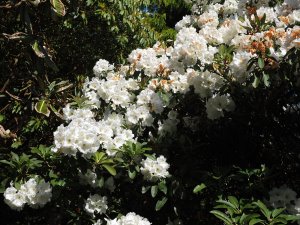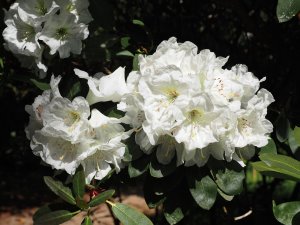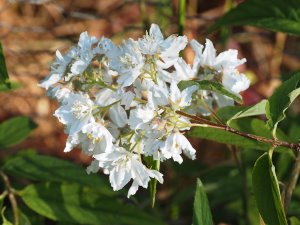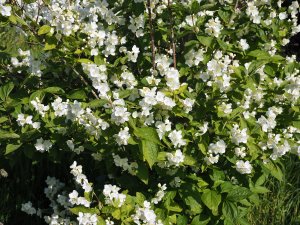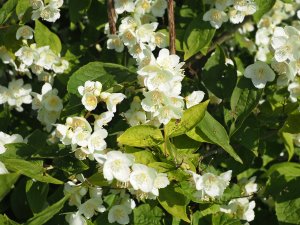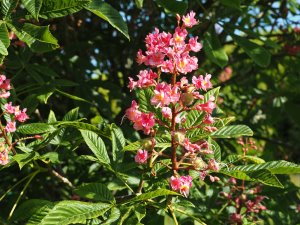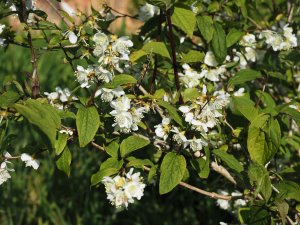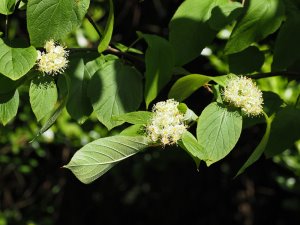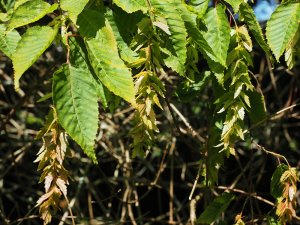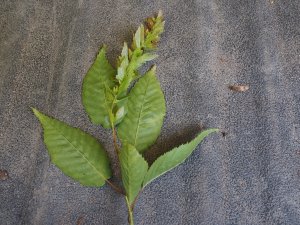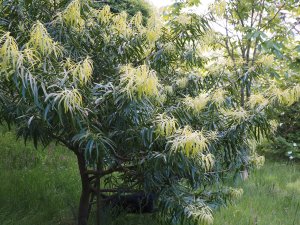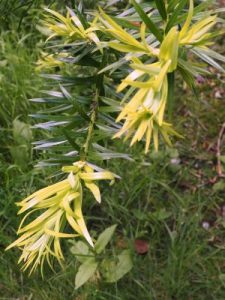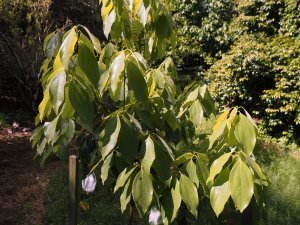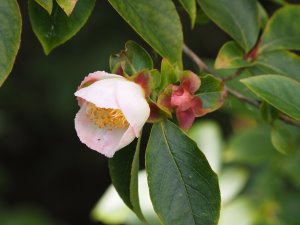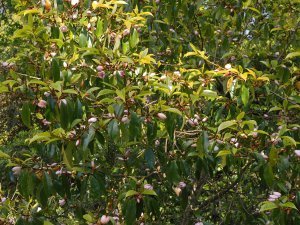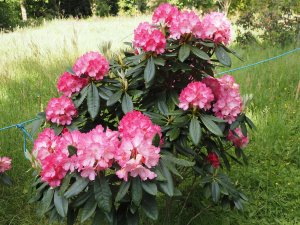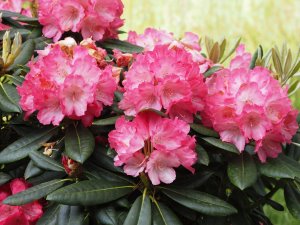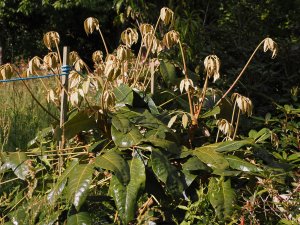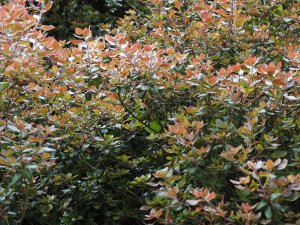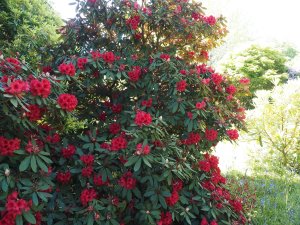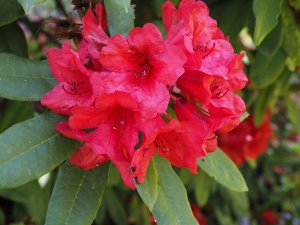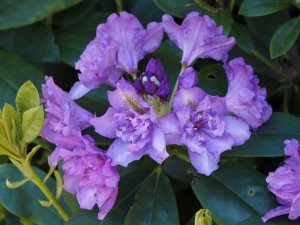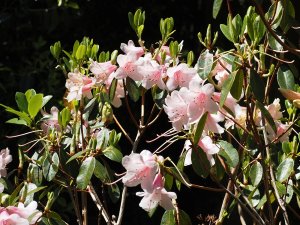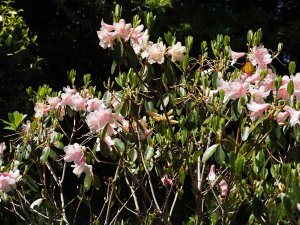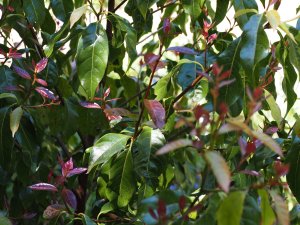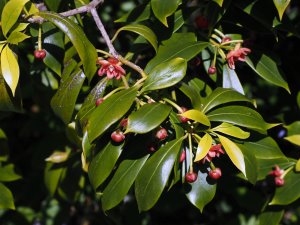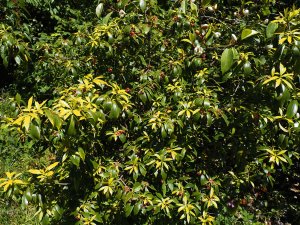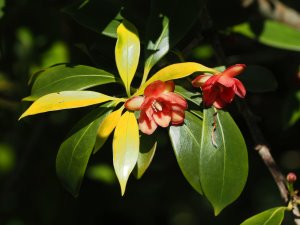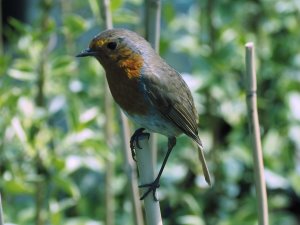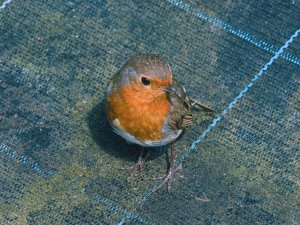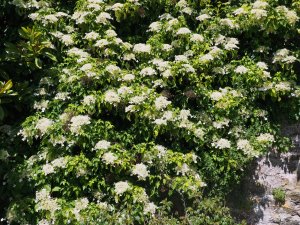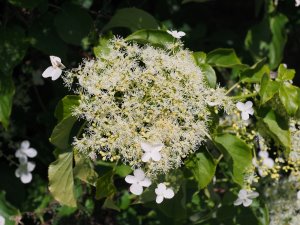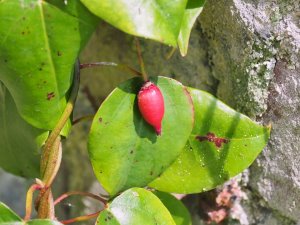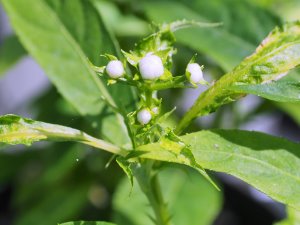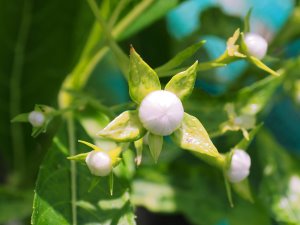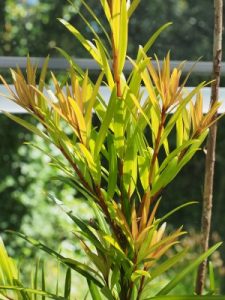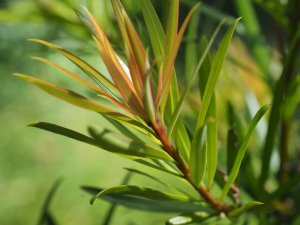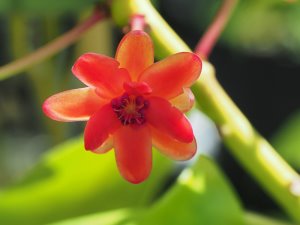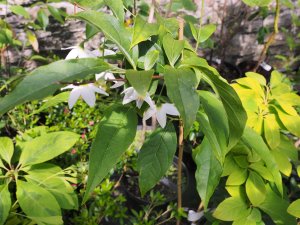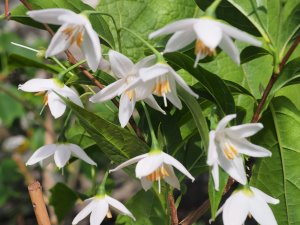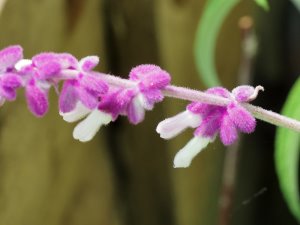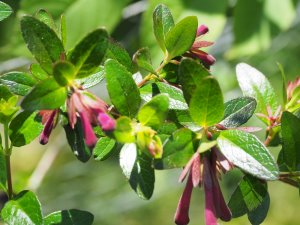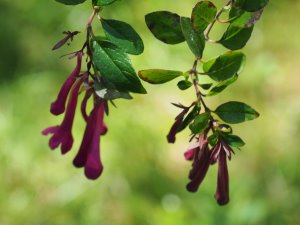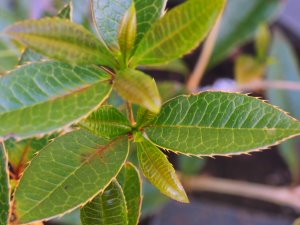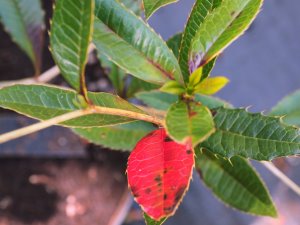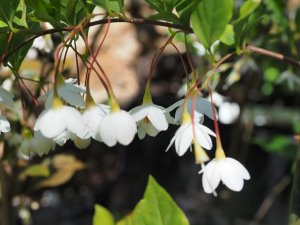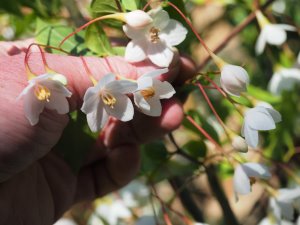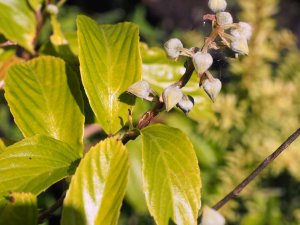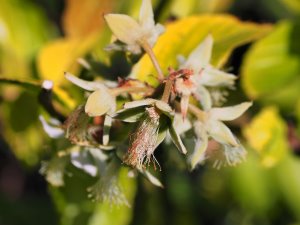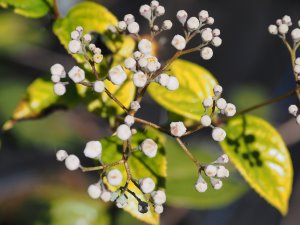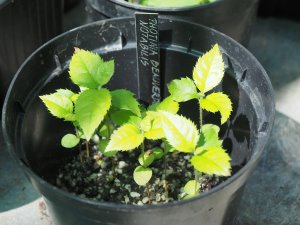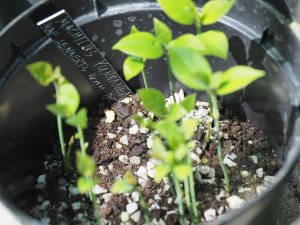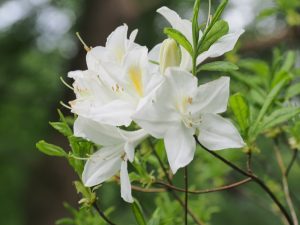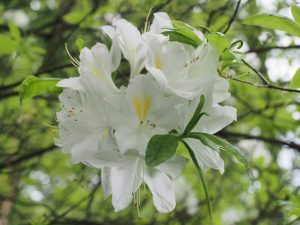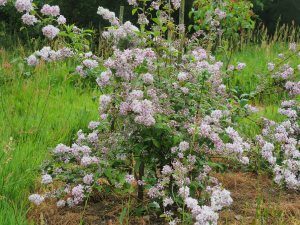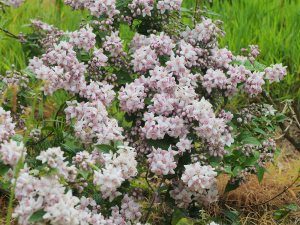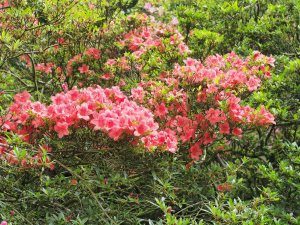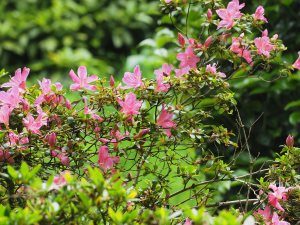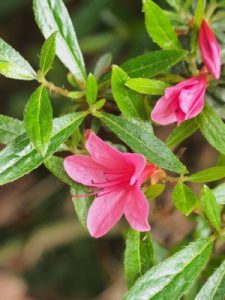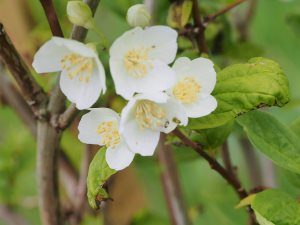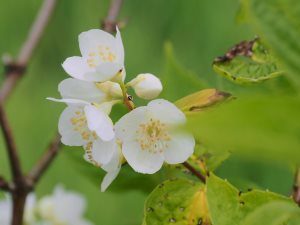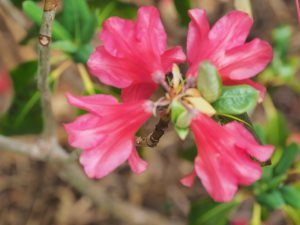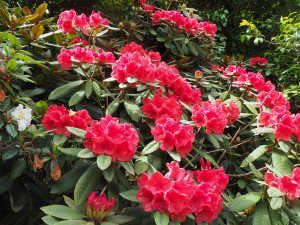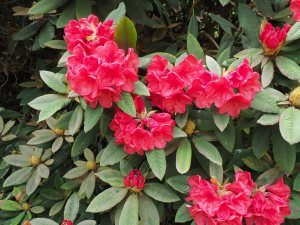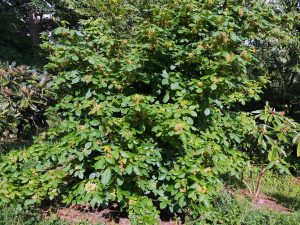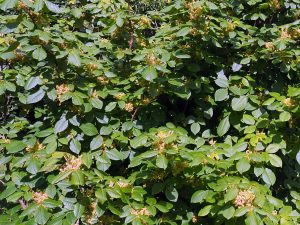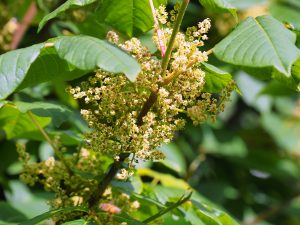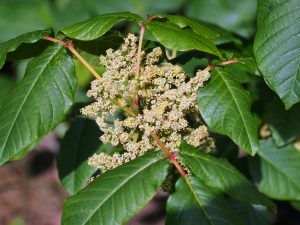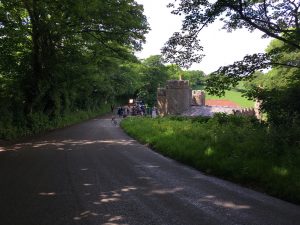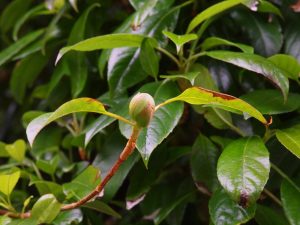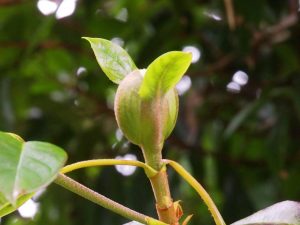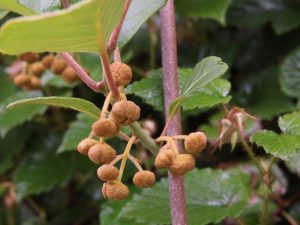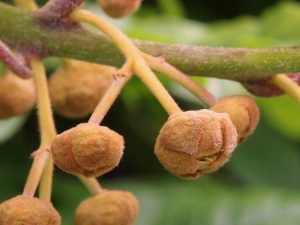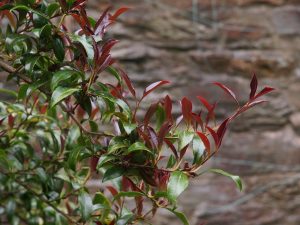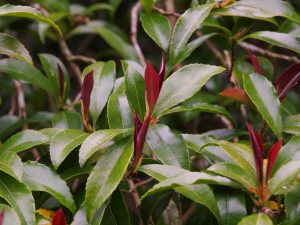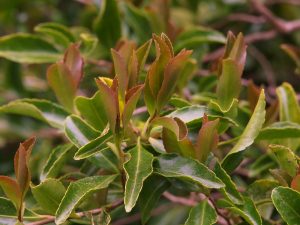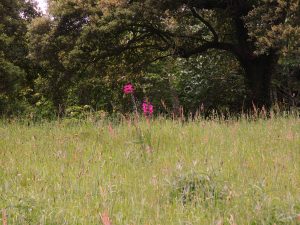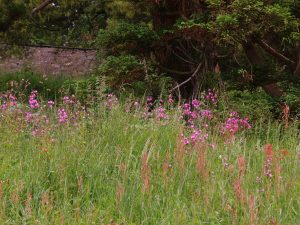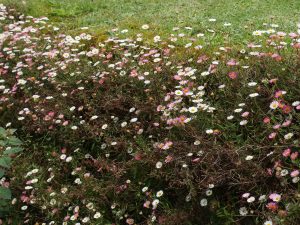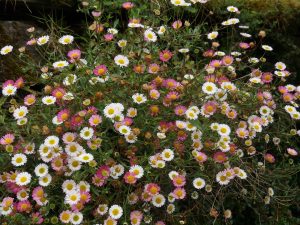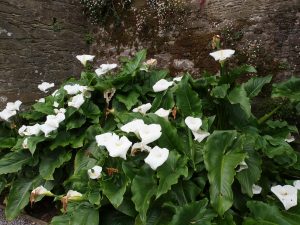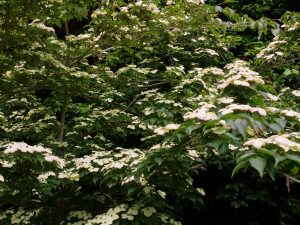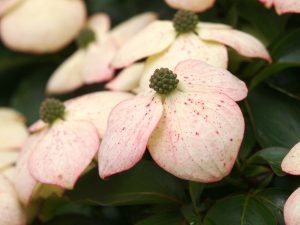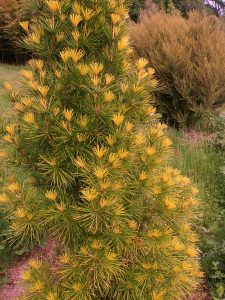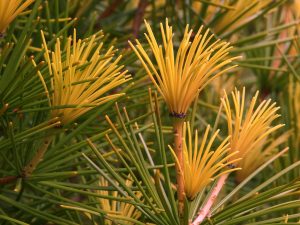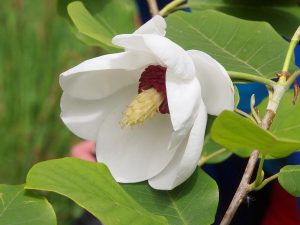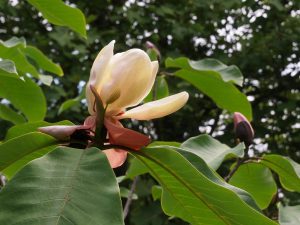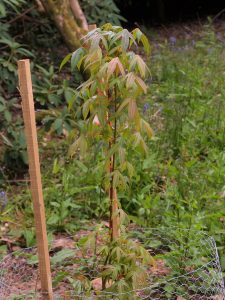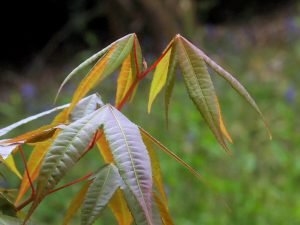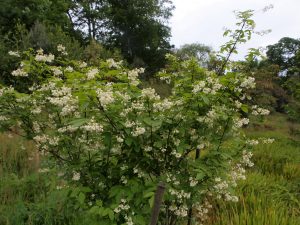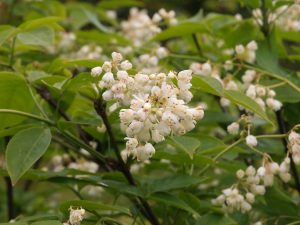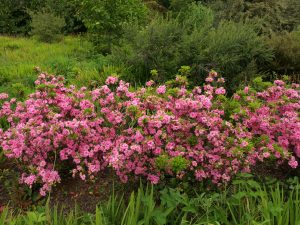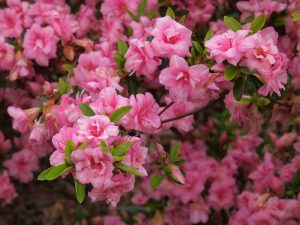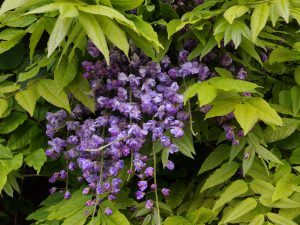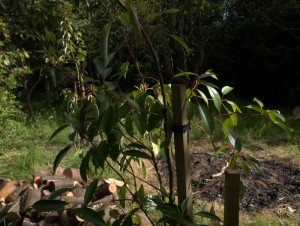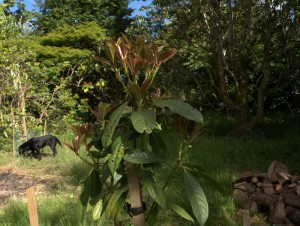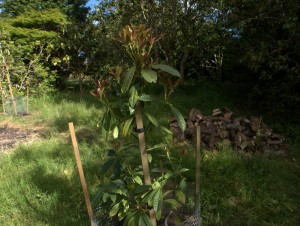2025 – CHW
Camellia maliflora which I have seldom seen flowering before. An unusual double flower and extremely late in the season. The original old plant is above the 2 Magnolia x veitchii, but there is another on Bond Street. Both in full shade. This plant is in full sun in Kennel Close. Is it really a species?
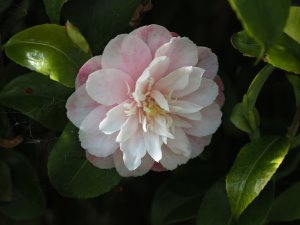
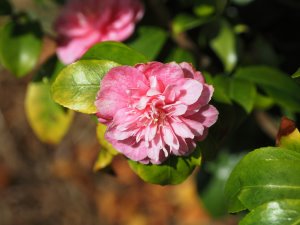
At Chelsea I photographed two primula species on the Keviock Nursery stand. They clearly both have family connections and a link to Werrington. JCW was a founder of the Primula Society and even delivered papers at their conferences. Forrest sent back seed of many primula species but few are now widely grown in the UK gardens apart perhaps from the candelabra primula. I suspect the reason for the primula failure and perhaps the demise of the Primula Society was that many of the high altitude species are simply not suited to our high rainfall and damp, wet winters. Keviock clearly manage them rather better in Scotland and their stand was a treasure trove of Chinese alpines.This is Primula obconica subsp. werringtonensi and the rather tiny Primula reidii var. williamsii.
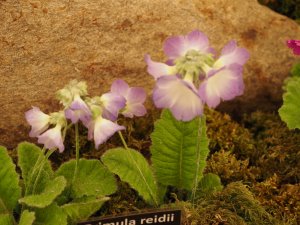
2023 – CHW
Enkianthus campanulatus ‘Wallaby’ now up to around 5 feet which is not bad for a supposed dwarf grower. Plentiful but pale flowers.
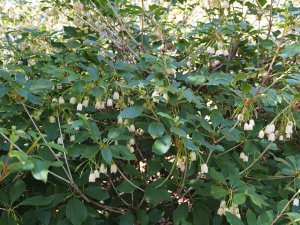
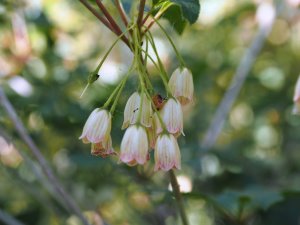
Not as many attractive blue cones on Abies koreana as last year below Slip Rail.
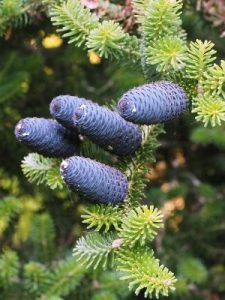
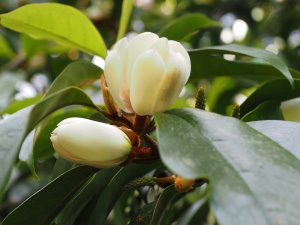
To Burncoose to thrash out a new propagation strategy for the future with Burncoose producing an even wider range of camellias, rhodos and magnolias. Many changes and improvements planned to our propagation facilities.Rhododendron ‘Gwilt King’ flowering late as usual. Three clumps in the garden at Burncoose.
A greenhouse visit to look at new things.Schizophragma hydrangeoides full out on the top wall in the sun.
Photinia beauverdiana var. notabilis (our seed).
2019 – CHW
A session with Karol doing short garden videos for the website to try to show how much there is still to see out in the garden.
Surprising though it is I discover a nearly pure white deciduous azalea on the drive which I have never noticed before. It has a faint yellow flash close up. The closest I can get to it in the reference books is ‘Exbury White’ or ‘White Lights’ but both have slightly more yellow in the flower than this one.
Our Belgian visitors yesterday confirmed that this peculiar shrub climbing up a dead yew tree is indeed a rhus and a very toxic one indeed. The label on the plant had long since faded and I had had difficulty believing that it really was a sumach species. This plant is commonly known as ‘poison ivy’ or, in Latin, as Toxiodendron radicans (Rhus radicans). Its sap is so toxic that I fear we should destroy it or at least fence it off with a warning sign. Its origin is Mexico and north America. Strangely it is not mentioned in the RHS encyclopaedia or in Hillier’s. Here is a ‘non-native’ plant which Defra might actually be right to destroy!
The flower buds on Hydrangea seemanii are well developed on the wall.
Attached is Maurice Foster’s email and archive pictures relating to Magnolia sieboldii sinensis. The pictures of our own plants’ leaves are attached. They are not as rounded as the herbarium specimens but just as hairy. Quite whether we have a true original M s sinensis to match the one at Windsor is therefore not conclusive although the habit and flower on the Windsor plant is identical to ours.Three newly planted out Acer flabellatum var yunnanese are coming into leaf. They were seedlings from the original plant in the Chinese garden at Werrington which we collected there five plus years ago.
Seeing Crug Farm Nursery exhibiting at the Tregrehan rare plant sale allowed a big purchase which may obviate the need to order from them in the spring. I have to confess to gloating over the two purchases.
The list of exciting and new plants collected in the wild (China and Vietnam) by Sue and Bleddyn is here for the record.Ternstroemia gymnathera
Rhederodendron ichangensis
Acer leptaphlebium
Lindera angustifolia
Polyspora axillaris
Ucodendron whartonii
Magnolia crassifolia
Rhodelia aff henryi
Magnolia foveolata
Rhederodendron kwangtungense
Rhoiptelea chiliantha
Polyspora speciosa
Illicium aff griffithii
Magnolia floribunda var tonkinensis
Rhodelia aff henryi
Rhodelia aff parvipetala
Alniphyllum aff eberhardii
Nyssa sinensis
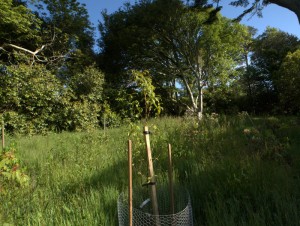
Most were massive plants which had to be planted out immediately irrespective of the season. So huge pits, a flagon of water in each first and dung in each pit with plenty of difficult staking. We may have to water them again and again if the summer turns out hot but 10 of the 18 plants are now in sheltered dampish locations with dappled shade. The rest can be potted on for spring planting. Two new to Caerhays species of rehderodendron, two more species of the camellia like flowering polyspora and our first ever two species of rhodelia. What excitement!
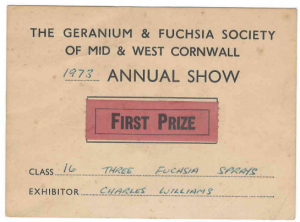
Burncoose had a good day at yesterday’s rare plant sale too shifting 80 of the 120 plants (50 separate varieties) taken for a four figure sum. A huge turnout of knowledgeable gardeners and a day which reminded me of my first experience of direct plant selling when I sold out all my rooted fuchsia cuttings from the slate slab at the front door on an open day 40 years ago. Dad made me give the proceeds to charity (or so he thought).
Then to a trip around the garden with Daphne Scott-Harden, our great family friend from the north who has been seriously in the wars after being knocked down by a car in Hexham las July. She is still on a crutch and with dad on his zimmer the garden tour for her will have to be in a ‘mule’.
1920 – JCW
We are a week ahead of 1919. Some of the Azalea remain very nice, particularly those nearest to Calendulaceum. The Harrow hybrids are poor, the heat hit them last year very hard.
1919 – JCW
Auklandii’s on the wane. Azaleas fair. P helodoxa very good. Cinnabarinum x Yunnanense very pretty and I had them draped and wired.
1913 – JCW
Auklandii’s over. Azaleas (our hybrids) yet very good. P balieyana nice. Roses well started, a small bit of daff seed picked.
1899 – JCW
Came down from London for one day, 4/5ths of the Caerhays seed picked, weighs over ½ pound (clean), most of the H Irving and G Spur. A bad season for the May, now at its best,. No waterlilies yet. Few of the bamboo doing much. Edgeworthii coming on. Dalhousi and Auklandii just at their best, also Azaleas, and P gibsoni. Most of the rhodo’s open including Ponticum.




